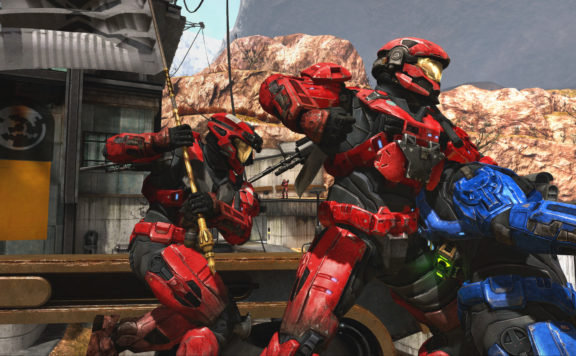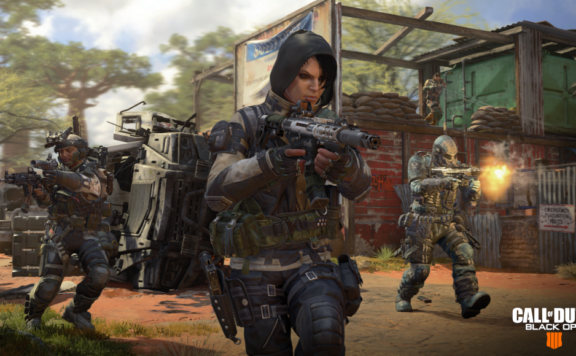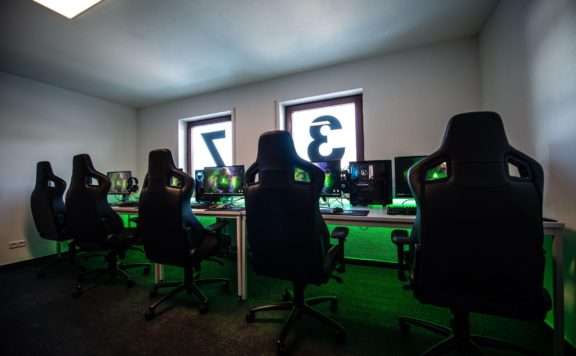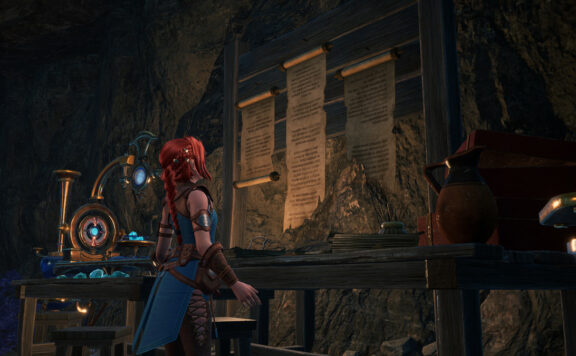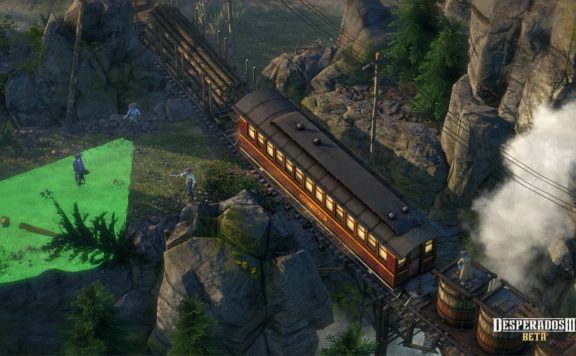Originally released on PlayStation 4 back in April 2018, Detroit: Become Human (DBH) has finally been ported over to PC. Joining developer Quantic Dream’s other titles, Heavy Rain and Beyond: Two Souls, Detroit: Become Human launched exclusively on the Epic Games Store on December 12, 2019. If like me, you don’t have a PS4 sitting in your living room, this marks the first time you have the chance to play the critically acclaimed narrative adventure. But is it worth sinking time and money into a game that is almost two years old? We address that very question in our Detroit: Become Human review for PC.
Before I head into the nuts and bolts of Detroit: Become Human, a little context is necessary. I have not played any of Quantic Dream’s games. I am familiar with the style and stories of their titles, and DBH has been out for almost two years, so to say I know nothing about the game would be errant. That said, I never watched any game-play of DBH, nor did I ever read any reviews that might taint my experiences or opinion of the game. You’ll be getting as virgin a review as possible based solely on the merits of the PC version.
The Story
As I mentioned before, Detroit: Become Human is a narrative adventure set in the near future of 2038 Detroit. Thanks to advancements in artificial intelligence and robotics, human-like androids have become commonplace. It’s not all champagne and caviar, though. With androids taking jobs from humans and sexbots breaking up marriages, there are plenty of people who aren’t too happy about the current state of things. With tempers at a tipping point and many people treating androids worse than their dogs, things are about to erupt. More and more androids are going against their programming fail-safes and becoming Deviants – androids that act erratic and illogically, even to the point of committing murder.
This is where our three android protagonists come in:
Kara – We meet Kara as she is being picked up from a Cyberlife store after getting some work done to repair damage caused by an “accident.” Upon arriving home she is reintroduced to young Alice, the victim of an abusive household. It is this environment that pushes Kara to become Alice’s protector.
Conner – A new prototype sent to the Detroit PD to aid in the investigation of the growing Deviant problem, Conner is paired up with a jaded veteran of the force and professed hater of androids, Lt. Hank Anderson.
Marcus – Marcus starts off the story as the servant to a wealthy painter, Carl Manfred. Living a fairly pedestrian existence while caring for Carl, Marcus’ world is about to be turned upside down.
Where the story goes from there is up to you. The story is broken up into chapters, with each segment progressing the story arc of one of the protagonists. All three characters have their own story but their paths can cross based on the decisions you make.
People often say the journey is more important than the destination. For Detroit Become Human, that adage is spot on. While the “Androids will take over the Earth” thread is prevalent throughout the story and the possible endings are predictable, your decisions will absolutely alter the path. Quantic Dreams has created thousands of choices for you to make, some having very little consequence when you initially make them but having story changing implications later on. Just how much impact do they really have, you cynically ask? Is the death of a main character enough of a game-changing event? I thought so.
Looking Through The Eyes Of An Android
Playing as an android was a very satisfying experience. In most games, you play a protagonist who already has a predefined personality. The story is molded around that personality, setting a framework you must work within. At the beginning of DBH, the androids are a blank slate, complete with unflinching nerves and blank stares. As my choices began to add up it was as though I was molding their personality, with each of my actions contributing to their final persona.
The most surprising aspect of this was how my decision making varied from one character to the next. For Kara and her story with Alice, my paternal instincts kicked in, with my sole goal selflessly shielding her from peril at all costs. On the flip side, with Conner I was continually weighing my options for the best way to manipulate my relationship with Hank, hopefully propelling our investigation forward. Finally, with Marcus, I was all over the board. Just like the deviant androids themselves, I found myself making irrational, oftentimes contradictory, choices as I erratically tried to weave through the ups and downs of his story arc.
Environmental Immersion
Visually, Detroit Become Human is spectacular. Each setting is meticulously crafted, giving the world a realistic look and feel. This may sound simple to accomplish but missing just one or two minor details can easily ruin the immersion. Fortunately, this doesn’t happen with Detroit Become Human. Whether walking through the streets of downtown, investigating a ransacked crime scene, or just trying to clean up a rundown home, the believable environments pull you deeper into the story.
The audio is on the same level as the visuals. Quantic Dream chose to use three different composers, allowing each one to tailor a soundtrack to their assigned character. This approach ties each chapter’s music to the primary protagonist, giving the scene a familiar feel and allowing me to quickly get back into the skin and persona of each android.
I wish that the same attention to detail was used when creating the camera controls. Most of the game is spent in a fixed third-person view, with sweeps of the mouse changing your character’s facing. This movement felt sluggish and often made movement around obstacles harder than it should be. There were also times where the view would switch to a locked external view, giving some cinematic gravity to the scene at the expense of additional character control issues.
Beyond the basic movement of the characters, all other aspects of game-play were fairly well-conceived. With the press of a button, the visuals change to an augmented view of the area, highlighting areas of interest for you to investigate. While scanning the area you are able to swing the camera freely around your character, leaving you immobile but providing much more command of the area.
To interact with objects, Quantic Dream has gone beyond a simple point and click system, adding multiple keypresses and mouse movements to simulate the actions your character is taking. These movements don’t add any value to the game-play but the required movement icon popping on-screen does detract from the immersion. My uneducated guess is it was the quickest way to port the controls over from the PS4 version, but a little effort to streamline this for mouse and keyboard would have been welcomed.
Where button mashing does come into play is during the action sequences sprinkled throughout the story. I am not generally a fan of quick-time events but the “every choice matters” style of the game carries into the action sequences to great effect. Missing a keypress doesn’t mean instant failure and a reload; you may get a fist to the face or lose ground in a chase sequence but it takes several such failures to alter the end result of the QTE. Even when you “fail” at your objective it is ultimately just another branch in your story. Handling the quick-time events in this manner removes the frustration of redoing segments over and over and adds some intense action to the otherwise slower pace of the game.
Along with quick-time events, Marcus and Conner both have a unique game mechanic to add to their interactions. For Conner, this involves reconstructing the events of a crime scene based on the clues at hand. In a method similar to video editing, you must move forward and reverse through a partial representation of the events, filling in missing pieces until the full scene is recreated. Marcus uses the same mechanics to predict the correct path to take through a parkour action sequence. Like the quick-time events, these segments add a fresh change of pace to the game even if they don’t really affect the outcome of your story.
Go With The Flow
Identifying areas of a branching story that I would like to replay can often be difficult. Quantic Dream was nice enough to include a flowchart at the conclusion of each chapter to show me the exact path I had taken. More times than not even when I thought I had thoroughly examined every option in a chapter, I would find that I missed huge sections of the chart. Each node that wasn’t used is locked to prevent you from deciphering which choices will get you to the outcome you desire, but many times it is fairly obvious where you will need to go the next time you play to get a certain outcome.I was surprised by the number of sections that required a specific decision being made in a prior chapter as well as the number of actual endings available. It has become apparent that several play-throughs will be required before I am able to explore all the nuances of the story Quantic Dream has crafted.
Final Download
I generally take a very analytical approach when playing games, attempting to evaluate each situation to gain the most beneficial outcome. Detroit Become Human didn’t always afford me that opportunity and I believe that made it a better game. I was presented with hundreds or thousands of decisions to make along my journey with Conner, Marcus, and Kara, and not all of them came out the way I wanted or expected. At the same time, none of the choices I made could be considered right or wrong, but instead just another branch in the story that could have major ramifications somewhere later in the story.
I finished my first run through Detroit Become Human with what I consider a successful outcome even though it wasn’t exactly how I expected everything to unfold. It only took me about 11 hours to complete my first run-through. That could have been shortened or extended by making different choices or a main character dying but I still have hours of game-play ahead of me as I replay chapters to find new paths through the chapter’s flowcharts and discover all the “what ifs” that I missed the first time. The character’s stories are well thought out, the visuals are amazing, and the quick-time events added just enough action to keep me on my toes, but it’s the replay-ability that pushes Detroit Become Human to the next tier for me.









